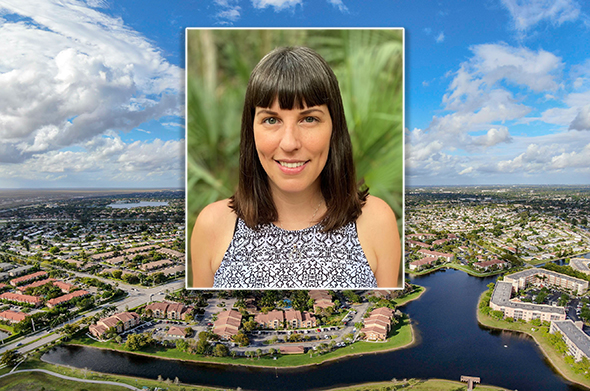Talking Urban Sprawl & Florida Wildlife With Elise Bennett

As Florida’s growing population drives demand for more development, the state’s wild spaces are disappearing – and as they do, so are the many native species that live in them.
As part of the Edward and Bonnie Foreman Biodiversity Lecture Series at Stetson Law, Elise Bennett, Florida director and senior attorney at the nonprofit Center for Biological Diversity, showed students how they can advocate for better species protections in Florida and beyond using tools ranging from the Endangered Species Act to writing letters to state officials. Her talk was titled “Feeling the Squeeze: Saving Biodiversity in a Shrinking Natural Landscape.”
Bennett, a Stetson Law alumna, said that from a young age, seeing Florida’s natural landscapes disappear motivated her to work in environmental conservation.
“If you grew up in Florida or even if you’ve been here a year or two, you’ve probably witnessed some of Florida’s natural areas disappearing into a parking lot, or a strip mall, or a fancy development,” she said. “Witnessing that was what really encouraged me to go into conservation work.”
A policy with a lasting legacy
While environmental advocates in the legal space have myriad tools for helping bring about effective policies for protecting biodiversity, Bennett pointed to the Endangered Species Act as one of the most powerful tools in an environmental lawyer’s toolbelt.
From the American alligator to the bald eagle, the Endangered Species Act has helped restore numerous vulnerable species. Bennett said some 99 percent of all species protected under the 1973 law have avoided extinction.
One big way the law works is by protecting natural habitats where otherwise-vulnerable species can thrive. Habitat loss is one of the biggest detriments to biodiversity – so limiting encroachment on or destruction of them can help ensure they maintain healthy populations.
“The reasons we need the Endangered Species Act is that humans have had a widespread impact on the systems species need to survive,” Bennett said. “Habitat loss is the main driver of species decline and extinction globally.”
Whether it’s developer or state agency trying to work around protections for gopher tortoises, or it’s the threat of beach erosion induced by sea-level rise posing an imminent danger to the Florida Keys mole skink, advocates can fight for more meaningful protections in court.
“We’re working to give them a fighting chance” amid the potentially devastating effects of overdevelopment and climate change.
Little creature, big stakes
At the Center for Biological Diversity, Bennett and her team spend a lot of time developing strategies that will result in meaningful policy changes.
Sometimes that means encouraging state lawmakers to pass a law barring blue crab fishermen from using traps that are killing a high number of diamondback terrapins, who find their way into the traps in search of food, get stuck, and drown.
It can mean challenging a government agency that is giving away critical land to developers, as is the case with a swath of land in South Florida that’s a favorite dwelling place for the Florida bonneted bat.
Or, as is the case with the Florida Keys mole skink – as Bennett describes it, “this amazing little lizard with a bright pink tail, found only on low-lying, ancient coral-reef islands in the Florida Keys” – it comes in the form of a battle for stronger Endangered Species Act protections that has spanned over a dozen years. After years of going back and forth with three presidential administrations, the U.S. Fish and Wildlife Service finally appears poised to list the species as threatened – and provide for the protection of over 7,000 acres of critical habitat.
Cases like this give Bennett and her fellow environmental advocates reason to remain optimistic.
“Despite big challenges, there are reasons to be hopeful,” Bennett said. “We have incredible, powerful, and diverse legal and policy tools that we can use to protect Florida’s biodiversity. We have unprecedented access to science and law to help better develop our policy solutions… We also have unprecedented access to government decisionmakers through email, online comment portals, Zoom meetings, and the traditional letter-writing and in-person meetings as well.”
Post date: Oct. 26, 2022
Media contact: Kate Bradshaw
[email protected] | 727-430-1580